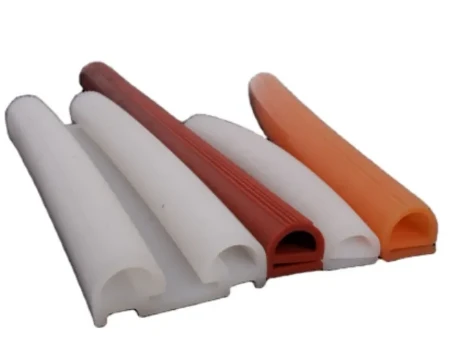Premium Rubber Strip for Door Seal Waterproof & Noise-Reducing
- Importance of door sealing solutions for modern buildings
- Material innovations in rubber seal production
- Design adaptations for different door types
- Market comparison of leading manufacturers
- Customization options for specific applications
- Real-world implementation case studies
- Installation techniques for maximum effectiveness

(rubber strip for door seal)
Protecting Your Premises with Rubber Strip for Door Seal Solutions
Rubber strip for door seal applications represents the first defense against environmental elements in residential and commercial spaces. These components maintain interior temperatures while blocking dust, moisture, and external noise. Statistics show that properly installed seals reduce energy loss by 15-20%, directly impacting utility expenses in buildings. Homeowners report 30% fewer drafts after replacing worn seals, demonstrating their critical function in structural protection. Beyond climate control, modern seals contribute to safety compliance by providing fire barrier ratings up to 90 minutes in certified configurations.
Advanced Material Engineering
Contemporary rubber strip garage door seal products utilize engineered compounds optimized for durability and performance. Thermoplastic elastomers (TPE) have largely replaced traditional rubber in premium seals, offering 3x greater UV resistance and maintaining flexibility at temperatures ranging from -40°F to 212°F. Leading manufacturers incorporate carbon reinforcement strands within the base material, increasing tensile strength by approximately 40% compared to standard formulations. Silicone-infused variants demonstrate exceptional longevity in coastal regions, resisting salt corrosion for 7-10 years versus standard rubber's 3-5 year lifespan in similar conditions.
Specialized Configurations for Varied Applications
Sliding door rubber seal strip designs employ unique profiles to accommodate different installation requirements and operational stresses:
- Hollow bulb designs provide superior compression recovery across wide gaps
- Dual-durometer extrusions combine rigid mounting sections with flexible contact edges
- Adhesive-backed options eliminate drilling needs on fragile surfaces
Commercial-grade door bottom seal rubber strip products integrate aluminum carriers that withstand repeated impacts from forklifts and pallet jacks without deformation. Recent innovations include antimicrobial additives that inhibit mold growth within the material matrix, particularly valuable for food processing facilities and healthcare environments.
Manufacturer Performance Comparison
| Brand | Compression Recovery | Operating Temp Range | Weather Resistance | Avg. Lifespan |
|---|---|---|---|---|
| PremiumGrade Seals | 95% after 10 yrs | -58°F to 230°F | UV-stable | 12-15 years |
| DuraSeal Systems | 87% after 8 yrs | -22°F to 200°F | Ozone-resistant | 8-10 years |
| ValueSeal Products | 78% after 5 yrs | 10°F to 180°F | Moderate UV | 5-7 years |
Third-party testing confirms that premium EPDM formulations maintain structural integrity through 500,000 compression cycles, making them suitable for high-traffic industrial settings.
Custom Engineering Approaches
For specialized installations requiring tailored solutions, manufacturers offer extensive customization capabilities:
- Dimension modifications accommodating non-standard frame dimensions down to ±0.015" tolerances
- Color matching services achieving precise aesthetic alignment with architectural finishes
- Composite material configurations combining sealing elements with thermal breaks or sound insulation layers
Production lead times for custom rubber strip for door seal
specifications average 3-5 weeks, with rapid prototyping available for urgent projects requiring validation before mass production.
Documented Performance Outcomes
A distribution center in Minnesota recorded a 27% reduction in heating costs after installing custom-engineered door bottom seal rubber strips across their loading bays. The solution featured:
- -65°F cold-temperature flexible compound
- Stainless steel wear plates at impact points
- Reflective strips for visibility enhancement
In residential applications, acoustic testing confirms premium sliding door rubber seal strip installations reduce external noise penetration by 12-15 decibels, creating significant quality-of-life improvements in urban environments.
Securing Efficiency with Door Bottom Seal Rubber Strip Solutions
Proper installation determines long-term effectiveness of rubber sealing systems. Critical considerations include:
- Surface preparation requirements vary significantly between metal and masonry substrates
- Dynamic compression calculations determine optimal bulb sizing for moving applications
- Commercial-grade adhesives increase bond strength by 200% versus standard hardware store solutions
Regular visual inspections paired with annual cleaning protocols extend functional service life by approximately 40%. Replacement timing indicators include visible cracking, compression-set deformation exceeding 20%, and consistent dust infiltration along seal paths. Ultimately, investing in appropriate specification and maintenance yields consistent performance dividends across building categories.

(rubber strip for door seal)
FAQS on rubber strip for door seal
5 FAQs about Rubber Strips for Door Seals
Q: What is a rubber strip for door seal used for?
A: It creates an airtight barrier to block drafts, moisture, and pests. This improves energy efficiency and comfort in homes or buildings.
Q: How do I install a rubber strip garage door seal?
A: Clean the surface first, then cut and press the seal into place using adhesive or fasteners. Ensure proper alignment for a snug garage door fit.
Q: What are the benefits of a sliding door rubber seal strip?
A: It reduces noise entry and prevents dust or rain ingress. This enhances insulation and smooth sliding operation for your patio or interior doors.
Q: How long does a door bottom seal rubber strip typically last?
A: Lifespan is 3-5 years with normal use. Regular cleaning helps maintain its weatherproofing and extends durability against wear.
Q: What factors should I consider when choosing a rubber strip for door seal?
A: Match the door type and size, plus prioritize weather-resistant materials. This ensures reliable sealing for garages, sliders, or bottoms.
-
Under Door Draught Stopper: Essential ProtectionNewsJul.31,2025
-
Garage Door Seal and Weatherstrips for ProtectionNewsJul.31,2025
-
Edge Banding Tape for Perfect EdgesNewsJul.31,2025
-
Table Corner Guards and Wall Corner ProtectorsNewsJul.31,2025
-
Stair Nose Edging Trim and Tile Stair SolutionsNewsJul.31,2025
-
Truck Bed Rubber Mats for Pickup BedsNewsJul.31,2025
-
Window Weather Stripping for Noise ReductionNewsJul.29,2025